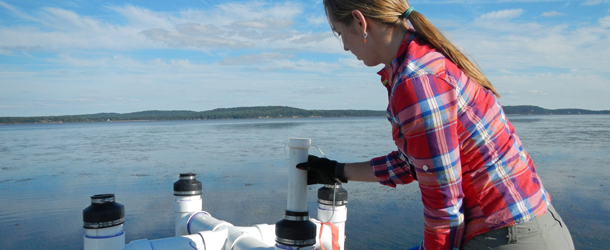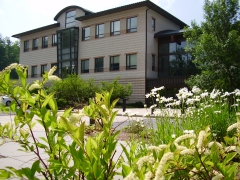The Maryland Sea Grant Bookstore will be closed for the winter holidays from Monday, December 15th to Friday, January 2nd and will not be taking orders during that time.
Fellowship Experiences
A blog by and about students supported by Maryland Sea Grant

Photo, Debbie Hinkle
Applying New Skills for National Science Collaboration
Hannah Cooper •
The science management and policy internship at Maryland Sea Grant was the perfect opportunity to place myself exactly where I wanted to be: at the intersection of science and real-world application. Read more...
A Place for Creativity in Science Writing
Grace O'Hara •
My lab mates and I wanted to gain a deeper understanding of the concepts so widely used across the field of ecology today. What we uncovered in the book was unexpected: not just the roots of ecology, but the trove of wonderful descriptions that jump-started the scientific field of ecology. Read more...
Sediment Coring 101
Erika Koontz •
Sediment cores are time capsules of information. Coring is a powerful tool that is commonly used in environmental science and geology. Read more...
Solving the Mystery of the Susquehanna Schmutz
Shayna Keller •
When conducting science experiments, new mysteries tend to appear, and we now have a new mystery on our hands. Read more...
Experimentando la metamorfosis de estudiante a científico profesional
Mairim M. Villafañe-Vicente •
¡Hola lectores! Soy Mairim M. Villafañe-Vicente de Gurabo, Puerto Rico. Soy parte de SEAS Islands Alliance (SEAS), un programa dirigido a estudiantes que se enfocan en geociencias financiado por Maryland Sea Grant (MDSG) y National Science Foundation (NSF) que incluye las islas de Puerto Rico, Guam e Islas Vírgenes de EE. UU. Read more...







